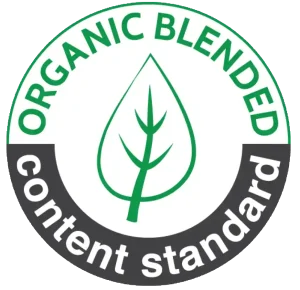Polyester fiber (PET) is a synthetic, hydrophobic polymer widely used across various industries, from fast fashion to high-tech applications like interior and outdoor materials. The primary characteristic of Polyester is its compact structure, lacking ionic dyeing sites, which makes traditional dyes (like Reactive or Acid Dyes) impractical.
To color Polyester, the textile industry must use Disperse Dyes for Polyester. These are non-ionic, small-molecular-sized dyes that are insoluble in water and operate based on the principle of physical diffusion.
This article delves into the mechanism of Disperse Dyes for Polyester, their classification based on thermal properties, and a detailed analysis of the specific color fastness requirements for high-end applications: sportswear, swimwear, backpacks, and furnishing materials.

1. Chemical Mechanism of Disperse Dyes for Polyester for Polyester
Nội dung tóm tắt
ToggleUnderstanding the dyeing mechanism is essential for controlling color quality on Polyester fabric.
1.1. Composition and Properties of Disperse Dyes for Polyester
Disperse Dyes for Polyester are highly hydrophobic compounds, typically derivatives of Azo, Anthraquinone, or Quinoline. Being insoluble in water, they are milled into super-fine particles (size around 0.1-1 micron) and uniformly dispersed in water using a Dispersing Agent to form a stable suspension.
1.2. High Temperature, High Pressure (HTHP) Dyeing
Polyester is a highly crystalline polymer with a Glass Transition Temperature (Tg) of approximately 80-85C. At normal temperatures, the fiber structure is too tight, preventing Disperse Dyes for Polyester from penetrating.
- Normal Temperature (<100C): The dyeing rate is very slow, suitable only for very pale shades.
- High Temperature (120-135C): High Temperature, High Pressure (HTHP) dyeing is the standard process. At this temperature, the Polyester polymer chains begin to vibrate, causing the fiber to “swell” and allowing the Disperse Dye molecules to dissolve and diffuse deep inside.
- Diffusion Mechanism: The dye leaves the suspension medium (water), enters the Vapour Phase, and then dissolves and fixes into the solid phase (Polyester fiber).
1.3. Role of Dispersing Agents
Dispersing Agents (typically derivatives of Lignosulfonate or Naphthalene Sulfonate Formaldehyde Condensate) have two main roles:
- Suspension Maintenance: Keeping the Disperse Dye particles suspended, preventing Aggregation or Settling throughout the dyeing process.
- Thermal Stability: Minimizing dye clumping at high temperatures (130C), which is the primary cause of Spotting defects and reduced Rubbing Fastness.
2. Classification of Disperse Dyes for Polyester by Thermal Properties (Energy)
The choice of Disperse Dye depends on the fabric’s final heat treatment temperature and the required sublimation fastness. Disperse Dyes for Polyester are classified into three groups based on energy (or molecular mass):
| Energy Group | C.I. Classification | Key Characteristics | Suitable Applications |
| Low Energy | Type A | Small molecule, sublimates easily below 170C. | Pale shades, Acetate fibers, basic transfer printing. |
| Medium Energy | Type B | Medium molecule, sublimates at 180-210C. | Medium shades, Knitwear, Sportswear. |
| High Energy | Type C/D | Large molecule, sublimates at 210-230C. | Deep/Black shades, Furnishings, Outdoor applications, high fastness requirements. |
2.1. Sublimation Fastness – The Deciding Factor
Sublimation Fastness is the ability of the Disperse Dye to remain fixed within the fiber without vaporizing or migrating to the surface when exposed to high temperatures (e.g., Heat Setting or ironing).
- Importance: High Energy Dyes (Type C/D) have the best Sublimation Fastness; therefore, they are prioritized for products requiring heat setting at 200C without staining the lining fabric or changing color.
3. Advanced Applications: Specific Technical Requirements
Each application of Polyester fabric demands a unique set of color fastness standards, directly influencing the appropriate Disperse Dye selection.
3.1. Applications in Sportswear (Activewear)
Sportswear often uses Polyester or Polyester/Elastane (Spandex) blends, requiring high color fastness to withstand sweat, frequent washing, and rubbing.
- Fastness Requirements:
- Washing Fastness: Requires Grade 4.0 or higher, especially when washed at 60C.
- Perspiration Fastness: Requires Grade 4.0 or higher. Acidic or alkaline pH from sweat can cause dye molecules to migrate.
- Rubbing Fastness: Requires Grade 4.0 (Dry) and Grade 3.5 (Wet) to prevent color rub-off onto skin or other fabrics.
- Dye Selection: Prioritize Medium Energy (Type B) or High Energy (Type C) Disperse Dyes for Polyester. Emphasis must be placed on using high-performance Dispersing Agents and Anti-Redeposition Agents to prevent unfixed dye from re-adhering to Elastane or Polyester fibers.
3.2. Applications in Swimwear
Swimwear faces extremely harsh chemical agents: Chlorine and saltwater. This is one of the most demanding applications for Disperse Dyes for Polyester.
- Highest Fastness Requirements:
- Chlorine Fastness: This is vital. The dye must withstand chlorine solution (often 50-100 ppm Active Chlorine, AATCC 162). Many Disperse Dyes for Polyester are destroyed by chlorine, leading to fading or color shifts (e.g., turning red/green tones).
- Sea Water Fastness: Resistance to the corrosive effects of salt (NaCl) and minerals.
- Light Fastness: Requires Grade 5.0 or higher, due to direct and continuous exposure to high-intensity UV rays.
- Dye Selection: Mandatory use of Metal-Free Disperse Dyes for Polyester, specifically designed to resist chlorine attack. Only a few specialized Anthraquinone and Azo Dyes meet this standard.
3.3. Applications in Backpacks and Outdoor Gear
Outdoor products like backpacks, bags, tents, and awnings require the highest color fastness to endure harsh weather conditions.
- Absolute Fastness Requirements:
- Light Fastness: Requires the highest grade (Grade 7-8 on the Blue Wool Scale). The fabric must withstand hundreds of hours of intense sunlight without significant fading.
- Weather Fastness: The ability to resist the combined effects of light, acid rain, and high/low temperatures.
- Dye Selection: Mandatory use of High Energy Disperse Dyes for Polyester (Type C/D) to ensure the large dye molecules are difficult to diffuse out of the fiber and are stable against UV radiation.
3.4. Applications in Furnishings (Upholstery and Drapery)
Furnishing fabrics (curtains, sofa covers) are not washed frequently but are heavily impacted by sunlight through windows and rubbing during use.
- Fastness Requirements:
- Light Fastness: Grade 6.0 or higher is the minimum standard.
- Dry Rubbing Fastness: Requires Grade 4.0 or higher.
- Dye Selection: Similar to outdoor applications, prioritize High Energy Disperse Dyes for Polyester (Type C/D) to ensure long color lifespan.
4. Advanced Dyeing Technologies for Disperse Dyes for Polyester

To meet the high color fastness standards for the above applications, advanced dyeing technologies must be employed.
4.1. HTHP Batch Dyeing (High Temperature, High Pressure)
This is the standard method for knit fabrics and small quantities.
- Procedure: Yarn or fabric is dyed in a closed machine (Jet Dyeing Machine) at 130C and 2-3 bar pressure.
- Control: Strict control is needed over the Ramping Rate and the use of Carrier Agents (if any) to ensure uniform Disperse Dye diffusion into the fiber, avoiding splotching defects.
4.2. Thermosol Continuous Dyeing
This process is suitable for large-volume production of woven fabrics, especially for furnishing and outdoor applications.
- Padding: The fabric is padded with a solution of Disperse Dye and a Thickener at room temperature.
- Drying: The fabric is dried to remove water.
- Thermosol: The fabric is treated in a dry heat chamber at a very high temperature (190-220C) for 30-90 seconds. This heat causes the Disperse Dye to sublimate (transition directly from solid to gas) and fix into the Polyester fiber.
- Washing Off: Washing to remove unfixed dye and the thickener.
4.3. Sublimation Printing (Transfer Printing)
Sublimation printing is a digital process using low/medium energy Disperse Dyes for Polyester (Type A/B).
- Mechanism: The dye is printed onto transfer paper, then transferred to the Polyester fabric using heat and pressure (180-200C). Under heat, the dye sublimates (changes directly from solid to gas) and diffuses into the fiber.
- Applications: Suitable for small quantities, printing complex patterns on sportswear and promotional products.
5. Technical Challenges When Using Disperse Dyes for Polyester
The Polyester dyeing process has several technical hurdles that must be overcome.
5.1. Oligomer Problem
Polyester is a polymer, and during synthesis and high-temperature dyeing, shorter polymer molecules (Oligomers) can migrate out of the fiber, forming a white or grayish chalky layer on the fabric surface and adhering to the dyeing machine walls.
- Troubleshooting: Use Oligomer Scavengers and regularly clean the dyeing machine.
5.2. Sublimation Failure
If Low Energy Disperse Dyes for Polyester are used for fabrics requiring a high heat setting temperature (200C), the dye will sublimate and stain other layers of fabric during stacking (Migration).
- Troubleshooting: Must correctly match the dye’s energy group with the product’s maximum heat treatment temperature.
5.3. Dyeing Blended Fabrics (Polyester Blends)
When dyeing blended fabrics (e.g., Polyester/Cotton), Disperse Dyes for Polyester only color the Polyester portion, leaving the Cotton white.
- Complex Procedure: Requires a two-step process (Two-Bath/One-Bath Two-Stage):
- Dye the Polyester with Disperse Dyes for Polyester (HTHP, 130C).
- Dye the Cotton with Reactive Dyes under different conditions.
- Common Defect: Staining – unfixed Disperse Dye can adhere to the Cotton surface. High-performance Dispersing Agents are needed to prevent this.
6. Sustainability and Disperse Dyes for Polyester
Although the HTHP process is energy-intensive, Disperse Dye innovations are moving toward sustainability.
6.1. Eco-Friendly Disperse Dyes for Polyester
The market is shifting towards using Metal-Free Disperse Dyes for Polyester and complying with stringent standards like OEKO-TEX Standard 100 and Bluesign. This eliminates toxic Aromatic Amines (Azo Dyes containing restricted amines).
6.2. Water and Chemical Reduction
- Supercritical CO2 Process (ScCO2): Dyeing technology using supercritical CO2. CO2 in a supercritical state acts as a solvent, dissolving the Disperse Dye and carrying it into the fiber without requiring water or dispersing agents. This is a Zero-Water Dyeing technology.
- Low-Water Ratio Dyeing: Using dyeing machines with a very low liquor-to-goods ratio (L/R) (e.g., 1:3 or 1:4) to reduce the amount of water and the energy needed for heating.
7. Quality Control (QC) and Testing Standards

To ensure quality, high-application Polyester products must be tested according to international standards.
7.1. Color Fastness Testing
| Application | Key Fastness Test Standard | Testing Method (AATCC/ISO) | Target Fastness Grade |
| Swimwear | Chlorine Fastness | AATCC 162 (Resistance to Chlorine) | Grade 4.0 or higher |
| Backpacks/Outdoor | Light Fastness | ISO 105 B02 (Xenon Arc Lamp) | Grade 7.0 or 8.0 |
| Sportswear | Perspiration Fastness | ISO 105 E04 (Artificial Perspiration) | Grade 4.0 or higher |
| Furnishings | Rubbing Fastness | ISO 105 X12 (Rubbing Fastness) | Grade 4.0 (Dry) |
7.2. Surface Inspection
- Spotting Test: Checking for color spots (due to dye aggregation) by observing under daylight and simulated light (D65/TL84).
- Rubbing Test (Wet/Dry): Testing wet and dry rubbing to ensure the Disperse Dye is fully fixed and does not migrate to the surface.
8. Frequently Asked Questions (FAQ) About Disperse Dyes for Polyester
1. Question: Are Disperse Dyes for Polyester the same as polyester dyes? Answer: Yes, chemically, Disperse Dyes for Polyester are the polyester dyes. They are non-ionic, water-insoluble compounds dispersed into super-fine particles in an aqueous medium to dye synthetic fibers like Polyester, Acetate, and Polyamide (Nylon).
2. Question: Why must Polyester be dyed at high temperatures (130C)? Answer: Polyester has a tight polymer structure. The temperature of 130C (under pressure) is necessary to exceed the fiber’s Glass Transition Temperature (Tg). This temporarily causes the fiber structure to “open up,” allowing the Disperse Dye molecules to diffuse deep inside the fiber for permanent color fixation.
3. Question: What is Sublimation Fastness and why is it important for Disperse Dyes for Polyester? Answer: Sublimation Fastness is the Disperse Dye’s ability to remain fixed within the fiber without vaporizing (sublimating) or migrating out when exposed to high temperatures (like during ironing or heat setting at 200C). It is important because sublimation can cause color fading, staining of other materials, or contamination of machinery.
4. Question: How to choose the right Disperse Dye for swimwear? Answer: You must select High Energy Disperse Dyes for Polyester (Type C/D) with strong resistance to oxidizing agents. Strict testing against the Chlorine Fastness standard (AATCC 162) is mandatory, as this is the most stringent technical requirement for swimwear.
5. Question: How does Thermosol continuous dyeing differ from HTHP batch dyeing? Answer:
- HTHP Batch: Dyes the entire batch of fabric in a closed machine (Jet) at 130C for a long duration (30-60 minutes). Suitable for knit fabrics and smaller quantities.
- Thermosol Continuous: Fabric is padded with dye, then the color is fixed using very high dry heat (190-220C) for an extremely short time (30-90 seconds). Suitable for woven fabrics and mass production.
6. Question: What are Oligomers and how do they affect Disperse Dyes for Polyester? Answer: Oligomers are shorter polymer molecules released from the fiber during high-temperature dyeing. They can adhere to the dyeing machine walls, recrystallize on the fabric surface, causing splotching, white/gray spots, or reducing rubbing fastness.
7. Question: Can Polyester fabric be dyed at normal temperature (Atmospheric)? Answer: Theoretically, yes, but only Low Energy Disperse Dyes for Polyester (Type A) can be used, and only Pastel Shades can be achieved. To achieve medium or deep shades, high temperature (130C) or a Carrier Agent is mandatory.
8. Question: How does a Carrier Agent work in the Disperse Dyeing process? Answer: Carrier Agents (usually organic compounds) are used to lower the Glass Transition Temperature (Tg) of Polyester. This helps the fiber “open up” at a lower temperature (100C), allowing dyeing under atmospheric pressure. However, they are less commonly used today due to toxicity and environmental concerns.
9. Question: Can Disperse Dyes for Polyester color Cotton fabric? Answer: Disperse Dyes for Polyester cannot color Cotton. They are hydrophobic and do not form chemical or ionic bonds with Cotton (a Cellulose fiber). When dyeing Polyester/Cotton blends, Disperse Dyes for Polyester only color the Polyester portion; Reactive Dyes must be used to dye the Cotton portion.
10. Question: What is the most important factor to prevent splotching defects when dyeing Disperse Dyes for Polyester? Answer: Controlling the Ramping Rate (temperature increase rate) between 80-130C is the most crucial factor. Increasing the temperature too quickly will cause the dye to Strike quickly and unevenly, leading to splotching. Simultaneously, the Dispersing Agent must stabilize the suspension throughout the dyeing process.
9. CONCLUSION AND DEVELOPMENT OUTLOOK
Disperse Dyes for Polyester are the irreplaceable foundation for the synthetic fiber industry, opening the door to products requiring absolute color fastness under all usage conditions, from sportswear, swimwear, to furnishings.
The selection of the Disperse Dye type must be based on a thorough analysis of the final color fastness requirements:
- Swimwear: Prioritize Chlorine and Light Fastness.
- Outdoor/Furnishings: Prioritize Light and Sublimation Fastness (High Energy Dyes).
- Sportswear: Prioritize Perspiration and Washing Fastness.
The current development in Polyester dyeing technology is moving toward energy-optimized processes (Low L/R, Thermosol) and environmentally friendly Disperse Dyes for Polyester, particularly the Supercritical CO2 Dyeing Technology, which promises a future of water-free and dispersant-free Polyester dyeing.
VieTextile offers HTHP dyeing machine solutions, automatic chemical dosing systems, and in-depth technical consulting on high-quality Disperse Dyes for Polyester, helping factories achieve the most demanding color fastness standards.
Contact Information:
Hotline: 0901 809 309
Email: info@vietextile.com
Website: https://vietextile.com










